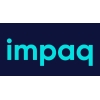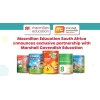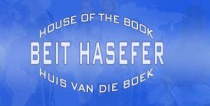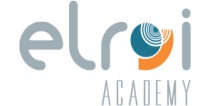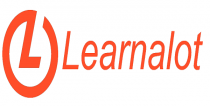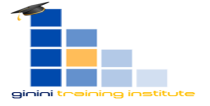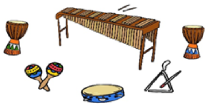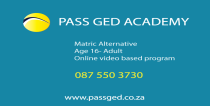Articles
Popular homeschooling approaches and styles
........................................................................
Homeschooling parents follow a wide variety of educational approaches to promote their children’s interests and aptitudes. Since the educational approaches have not been used in mainstream schools, home educating parents are not aware of these. With the freedom that home education provides, there is a renewed interest in these approaches.
It is also important that policy makers are aware of, to ensure that policy on home education makes provision for a diversity of educational approaches. Otherwise policy will tend to limit the freedom of parents to choose the type of education that is in the best interest of their children.
1. Traditional school education
The traditional approach, or structured curriculum, is based on a division of knowledge into grades and subjects and make use of formal assessments to measure progress.
1.1. Benefits
- Dividing knowledge into subjects and grades is a form of division of labour that makes it possible to deliver education in a school environment. Teachers can specialize in subjects and learners can be divided into manageable groups based on age.
- It gives new and uncertain home educators a framework to rely on.
- The child’s progress according to the curriculum can be easily monitored.
- Families who like structure and routine prefer this approach
- Parents can just follow a teacher guide. No need to work out their own curriculum
- The assessment results / reports are also useful to show that learners are making progress to a 3rd party.
1.2. Disadvantages
- The structured curriculum cannot be adapted to the interests and proficiencies of the learner. The limited number of subjects cannot be adapted to the interests and proficiencies of learners and tend to demotivate learners.
- The structured curriculum cannot be adapted to the intellectual development of the learner, and therefore is not suitable for groups consisting of learners of different ages.
- Gifted learners get bored in their grade and learners with any learning disability fall behind. Due to the negative effects of having children learn things for which they are not ready, a “delayed academics” movement has emerged.
- Since boys and girls develop differently, and a structured curriculum cannot take these differences into account, it has been found that structured curriculums generally discriminate against boys.
The division of knowledge into discreet subjects that have little logical inter-relation makes subject matter difficult to learn. In order for learners to concentrate for long hours on knowledge that is neither interesting, relevant or logically integrated, schools increasingly suggest that learners use drugs lto remain focused. - In order to achieve high marks in assessments, learners must continuously gather information in their short-term memory in order to regurgitate it during the examination. Since the information on which they were assessed has little relevance to the learners at that stage, they forget it again. A process where information is constantly consumed and purged can be described as intellectual bulimia, with negative consequences similar to physical bulimia. According John Holt, "...the anxiety children feel at constantly being tested, their fear of failure, punishment, and disgrace, severely reduces their ability both to perceive and to remember, and drives them away from the material being studied into strategies for fooling teachers into thinking they know what they really don't know."
- Curriculum packages can be expensive.
2. CAPS
A structured curriculum with assessments that was compiled by the South African Department of Basic Education. It prescribes what teachers must do for every subject down to the hour. This approach has all the benefits and disadvantages of a structured curriculum, plus some additional ones.
2.1. Benefits
- The national curriculum can be used to transfer the values (as stated in the intention of CAPS) of the current government to the next generation, in order to ensure that the next generation will vote for the current government in future. On 18 March 2014, Basic Education Minister Angie Motshekga, tweeted: “It is my duty to help educate the people of South Africa on how to vote for the ANC.”
- Having a single national curriculum gives the state total control over learners and teachers. The state can easily monitor the progress of each learner (by means of the EMIS system) and prescribe to the finest detail what teachers must do.
2.2. Disadvantages
- If CAPS transfers values to learners that differ from the values that parents subscribe to, it negatively affects the relationship between learners and parents and through this contributes to the breakdown of families. Parental involvement in education is one of the most important factors determining the success of education. If CAPS negatively affects the relationship between parents and learners, it will affect parental involvement and in turn affect the success of education.
- All the information on the academic achievement is easily accessible to state officials (using EMIS), but not to parents. This is an invasion of the privacy of the family, but it also gives the state power over parents. This information can be used to take custody away from parents, and since parents do not have access to EMIS they have very little information to defend themselves against the state.
- CAPS requires reports and a portfolio of evidence that can only be provided by curriculum suppliers. Since compiling reports and a portfolio of evidence are very time consuming in a home environment, it makes home education based on CAPS expensive.
- In the introduction of CAPS it states that it is based on static body of “knowledge, skills and values worth learning” that is transmitted to learners. In the 21st century where information is readily available, it is not relevant anymore to master a static body of knowledge, but to be know how to continuously learn new knowledge. This makes CAPS ill-suited for the 21st century.
- The analysis of a remedial phycologist has shown that CAPS is actually harmful to children. Click here to read the article.
- Although CAPS was designed for schools, it is not even suitable for schools, because it places such an enormous burden on teachers that they lose the passion for teaching. Click here for a radio program on this.
3. Classical Education
The Classical education movement advocates a form of education purportedly based in the traditions of Western culture, with a particular focus on education as understood and taught in Classical antiquity and the Middle Ages. It is a structured programme based on the development phases of grammar, logic and rhetoric (the trivium) with a strong emphasis on classical languages such as Greek and Latin.
3.1. Benefits
- Classical education aims to provide students with the tools that will enable them to become their own teachers throughout their lifetimes. A vast, inexhaustible world of learning is opened and, furthermore, the student is equipped to discern between that which is wholesome — contributing therefore to the uplifting of the mind — and that which is corrupting or debilitating. In other words, the student will be able to think critically and independently.
- It requires a lot of 2-way communication between learners and teachers and is therefore beneficial to strengthen the relationship between parents and children.
- It strongly develops analytical and critical thinking.
- It follows the natural stages of child development.
- Good fit for children who love learning languages.
3.2. Disadvantages
- Classical education requires a high amount of academic activity which is not always suitable for learners who are less academically and more practically inclined.
- The current political environment is very hostile towards the Western civilization, as illustrated by the reaction to the colonialism tweets by Helen Zille. Choosing a curriculum that is rooted in the traditions of Western culture will be viewed with suspicion in such a political environment.
- Facts and subject matter can be introduced to students when they are not ready for it.
- It can sometimes be too rigid and restrictive, especially when a child is gifted.
Click here for a video interview with a mom who uses the classical education approach.
4. Unit Studies
This is a fun, cheap and versatile approach where the whole family can partake. A topic in which the child is interested is used and studies from different angles, thus incorporation all the subjects like Language Arts, History, Science, Music, Art, etc. For example, when they study the ear they build the parts of the ear (science) read the story of Bell (history and literature), look where Bell comes from on the map (geography) and study and listen to gramophone (technology and music) etc. Children keep notebooks and portfolios of their studies. Examples of this approach is Konos and Weaver.
It is also interesting to note that the Finnish education system which is regarded as one of the best in the word is moving away from subjects and moving towards something similar called Phenomenon Based Learning (PhenoBL).
4.1. Benefits
- Unit studies encourage students to see a topic as a whole; they see the big picture, not just bits and pieces of it. This solves the problem of the lack of logical integration between subjects and makes the material easier to remember. This is beneficial to retention of learned material.
- This is a lot more like learning from real-life experience. In fact, good unit studies will incorporate as many real-life experiences, such as field trips and science experiments, as possible. This makes learners more prepared for the real world and learning enjoyable.
- When learning from unit studies, students develop the ability to study various facets of a topic which contribute to the development of their critical-thinking and problem-solving skills. It also develops their research skills.
- Topics can be chosen according to the interests of learners and with the purpose to build the character of the learner.
- It is very suitable for mixed age groups.
- Can be a cheap option.
- Enjoyable way of learning for creative learners.
4.2. Disadvantages
- It can sometimes be very time-consuming to prepare for a specific topic.
- If certain subjects are over-emphasised, it has the same disadvantages as a structured curriculum.
- It may be a challenge to cover all the academic subjects and parent then buy additional curriculum material for subjects like maths and languages.
Click here for a video interview with a mom who uses the unit studies approach.
5. Charlotte Mason
A method that is based on Charlotte Mason’s firm belief that the child is a person and we must educate that whole person, not just his mind. A Charlotte Mason education is three-pronged: in her words, “Education is an Atmosphere, a Discipline, a Life.” By “Atmosphere,” Charlotte meant the surroundings in which the child grows up. A child absorbs a lot from his home environment. Charlotte believed that the ideas that rule your life as a parent make up one-third of your child’s education. By “Discipline” Charlotte meant the discipline of good habits—and specifically habits of character. Cultivating good habits in your child’s life make up another third of his education. The other third of education, “Life,” applies to academics. Charlotte believed that we should give children living thoughts and ideas, not just dry facts. So all of her methods for teaching the various school subjects are built around that concept. For example, Charlotte’s students used living books rather than dry textbooks. Living books are usually written in a narrative or story form by one author who has a passion for his topic. A living book makes the subject “come alive.” And the students were required to tell back, or narrate, in their own words what was read in the living book, in order to secure it in their minds.
5.1. Benefits
- It fosters creativity, gentleness of spirit, and a true love of learning. This method is less structured than some curriculums and offers families a relaxed, flexible approach to education.
- Living books are never boring.
- Parents and children are more happy with these short and interesting lessons.
5.2. Disadvantages
- Because the method doesn’t rely on tests or drills, parents must learn to observe progress and document it through written notes. Children also keep a notebook, which serves as evidence of learning.
- Classical books can sometimes be expensive.
- Parents may feel uncertain if they choose the right books.
Click here for a video interview with a mom who uses the Charlotte Mason approach.
6. Montessori
The Montessori method is based on the idea that learning should be a natural, self-directed process. It is also commonly referred to as child-led learning. Children learn best when they are left to discover.
The Montessori Method of education views the child as one who is naturally eager for knowledge and capable of initiating learning in a supportive, thoughtfully prepared learning environment. It attempts to develop children physically, socially, emotionally, cognitively and spiritually.
While “Montessori” is used to cover a range of approaches the following practices are regarded as core:
- Mixed age classrooms in 3 year-phases starting at ages 2½ or 3 to 6 years old and ending at 18.
- Student choice of activity from within a prescribed range of options.
- Uninterrupted blocks of work time, ideally three hours.
- A constructivist or "discovery" model, where students learn concepts from working with materials, rather than by direct instruction.
- Specialized educational materials developed by Montessori and her collaborators often made out of natural, aesthetic materials such as wood, rather than plastic.
- A thoughtfully prepared and well-ordered environment where materials are organized by subject area, within reach of the child, and are appropriate in size.
- Freedom of movement within the environment. As few homes can incorporate a full Montessori environment it is not possible to have one space for Montessori instruction materials have to be spread through out the home.
- In home-based Montessori Education a parent who has familiarized themselves with the Montessori philosophy and approach, who observes the individual child's characteristics, tendencies, innate talents and abilities. The parent is a director or facilitator of learning rather than a didactic instructor.
6.1. Benefits
- Montessori school children choose how to spend their own time.
- Hard academics are not the primary concern in preschool
- The system believes that children learn best at their own pace and in their own way.
- Older children and younger children can learn from one another.
- Children in Montessori schools are more ready to learn reading, writing and math than other children as they are not under the pressure.
- Montessori-educated children were more peaceful and cooperative and less aggressive than other children in their age range
- The Montessori philosophy encourages students to develop their "soft skills," the unquantifiable life skills such as responsibility, fairness, independence, adaptability and positivity.
- By allowing children to determine the ways they spend their time in the classroom helps train them to be self-disciplined later in life.
6.2. Disadvantages
- There is no testing or grades issued or homework to teach them discipline and to measure their progress.
- Children may not know how to handle a competitive environment later in life.
- Montessori schools can be expensive.
- Montessori may not be the best environment for a child who is extremely social or who can't sit still and focus independently on a task.
Click here for a video interview with a mom who uses the Montessori approach.
7. Unschooling (Self-directed approach)
A programme that is guided by the interests of the child with a strong emphasis of learning outside the classroom. It is also commonly referred to as “natural Learning”, “experience-based learning”, or “independent learning.” Unschooling homes typically let their current interests dictate what they choose to study. There is no set curriculum. They see the world as their classroom. Parents provide a rich environment of books, experiences, and resources for learning and respond to their children's questions and interests. Advocates believe that children can be trusted to direct their own learning, and they do not require any study that the child does not choose. It is based on the ideas of John Holt and Sugata Mitra that children are natural learners.
7.1. Benefits
- It encourages exploration of activities initiated by the children themselves, believing that the more personal learning is, the more meaningful, well-understood and therefore useful it is to the child.
- It is totally adapted to the interests, proficiencies and development of each individual child, because it expands from children's natural curiosity as an extension of their interests, concerns, needs, goals, and plans.
- Children learn how to constantly master new knowledge independently, which makes this educational approach suitable to prepare learners for the 21st century.
- It is very suitable for mixed age groups.
- It is very suitable for children with special needs.
- Gives parents and children a lot of freedom as leaning is not limited to a certain environment or learning material.
7.2. Disadvantages
- It is almost impossible to measure progress that can be shown to a third party.
- It is the educational approach that is least understood by outsiders, because it requires enormous intellectual paradigm shifts to understand. Using this approach can cause conflict with friends, family and education officials.
- Parents can be uncertain if their children learn enough, and if there are gaps in their education.
Click here for a video interview with a mom who uses the self directed approach.
8. Eclectic approach
Using a mixture of structured curriculums and . e.g. using one curriculum for one subject/grade and another curriculum/grade for another subject. One can even mix a number of educational approaches. An eclectic approach includes elements and characteristics of different curriculums and methods. It is a flexible approach. As one curriculum cannot fulfil all their child’s educational needs the family chooses the best of a variety of curriculums and create their own unique curriculum. For instance, a family will use hands-on unit studies together with a textbook for maths, while keeping the stages of the Trivium in mind.
8.1. Benefits
- The parents can tailor the educational program to each child’s individual needs.
- It is a the most flexible approach.
- It can be done at low cost.
8.2. Disadvantages
- It can be a very overwhelming approach for inexperienced homeschoolers.
- Tailoring an individual educational program can be time consuming.
- Some parents can be anxious that their children do not learn enough.
Click here for a video interview with a mom who uses the self directed approach.
9. Summary
Having watch the videos you will probably have an idea of the approach that resonates most with your family.
Parents know best how their children learns. Every family is unique, so they need to find the home education method that works best for them and their children. There is also no right or wrong way to home educate. With the freedom that home education provides, there is a renewed interest in these approaches.
Interested in finding out the approach that will suit your family? Click here to complete a quiz to find out which approach will suit you best.
Many times parents find that more than one approach will work for their family. The only way that parents will be sure if it is the best approach is to give it a try. Like test driving a few demo model cars before buying a new car.
Rest assure. Children learn despite the approach you use.
Events
Legal & Research
Homeschooling and the law
Home schooling was recognized in 1996 in Section 51 of the SA Schools
+ ViewCentres
Homeschool ABC
Support
Curriculums
Teneo Online School
Online High School, Primary School and Pre-Primary School offering ...
Impaq: Homeschool & Online ...
Impaq: The leading homeschooling curriculum provider in South ...
Cambridge & International ...
As of 1 January 2025, Macmillan Education is the sole agent ...
Frequently Asked Questions
-
Where can I find homeschool support groups?
There are many support groups consisting of parents that do things together and help each other. These groups operate on Facebook, mailing lists and...
-
Can I be a working mom and homeschool?
Single parents who are committed to homeschool organize a schedule around their work commitments and sometimes involve family or tutors to assist...
-
Do homeschoolers take holidays?
Yes, they take breaks. Some homeschool families follow the public school year calendar especially if they are involved in sport and music...
-
Do I need to be a qualified teacher?
No. Research has found no correlation between the qualification of the parent and the academic performance of the child. Research shows that...
Has no content to show!










